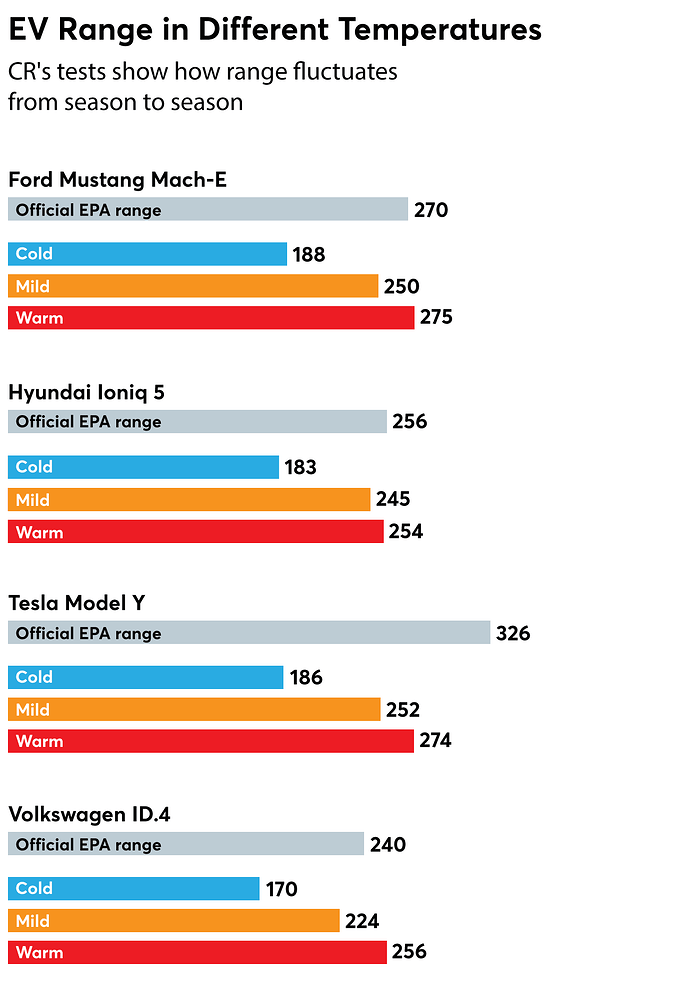In 2022, the U.S. magazine Consumer Reports conducted a real-world test of four electric vehicles on the U.S. east coast in February, April, and August.
We began testing in frigid February 2022, repeating the procedure in balmy April and in August heat. Originally, we tested only the trio from Ford, Tesla, and VW in the winter of 2022. We’ve since closed the loop and ran the Hyundai Ioniq 5 on a day that was 17° F (-8 Celsius) on the same route under the same conditions. Like the other three EVs, it followed the familiar trend, showing a remarkably similar 25 percent loss of range compared with the mild weather run.
The EVs were fully charged overnight before each of the runs and were allowed to precondition the cabin to 72° F while still plugged in outdoors. At the same time, we checked and verified the tire pressure. Heated and cooled seats weren’t used.
On the cold day, the temperature averaged 16° F (-8° C), meaning that considerable energy was needed to keep the cabin comfy and the battery pack in its ideal operating condition. The mild spring day was 65° F (18° C) during most of the drive, and the warm summer day was 85° F (29° C) during the drive. Each test day was clear and sunny.
⋮
Some electric vehicles, including current Tesla Model Ys (I don’t know about the one tested in 2022), use a heat pump for heat in winter instead of resistive heating. This heats with less energy from the battery and reduces the impact on range, and also serves as an air conditioner in warm weather. I discussed this in a 2023-08-28 comment on another post.
